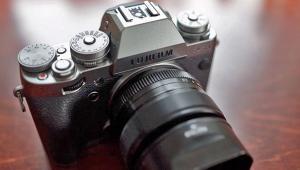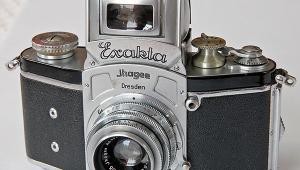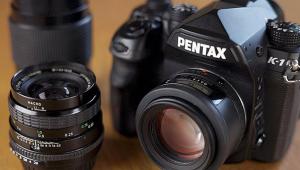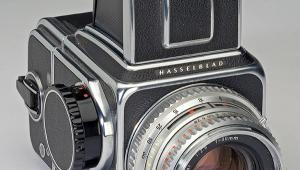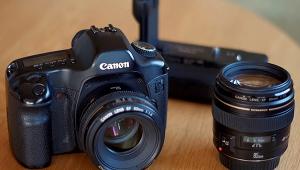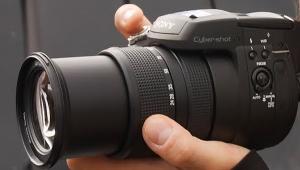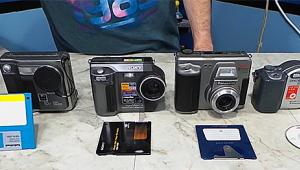Voigtlnder’s Bessa R3A; A Rangefinder 35 With Electronic Shutter
Just when you thought the R2 was the pinnacle of Voigtländer Bessa design, along came the R2A and R3A. They differ from the R2 in several ways, most notably the adoption of an electronic shutter allowing Aperture Priority automation; this is combined with a new meter. Other significant differences are a revised (and easier-to-use) rewind crank; the addition of a back lock, all but eliminating the risk of accidental opening; a revised viewfinder window; and, in the case of the R3A, a life-size viewfinder (the R2A has the same magnification as the R2, about 3/4 life size).
|
Voigtländer's Bessa R3A
|
|
 |
|
|
Shutter And Meter Readings
The electronic shutter and metering arrangements are very clever indeed. First, the camera must be switched on: the on-off switch is concentric with the shutter release. Second, it must be wound on: no metering unless the shutter is cocked. Third, instead of a single shutter speed index mark on the camera body, opposite the shutter speed dial, there are no fewer than nine marks, a big center dot, and four smaller dots on either side corresponding to +/-1/2, 1, 11/2, and 2 EV.
For manual use, half-depress the shutter release and the meter comes on. The speed recommended by the meter--from 1 second to 1/2000 sec--reads out along the bottom of the viewfinder, below the viewfinder frame, and so does the speed set against the central index. If the two are different, the set speed is lit steadily and the recommended speed flashes. If you think that the subject demands a different exposure, you can therefore see both the camera's opinion and yours, simultaneously. This alone is brilliant.
For auto, you set the "A" on the shutter speed dial to the central index. This time, you only get one number in the viewfinder, the one that the meter proposes to set. This is lit steadily. If you don't agree with this exposure assessment, either meter elsewhere and use the AE lock (a small round button on the back, right under your thumb where it rests on the wind-on lever) or simply twist the shutter speed dial so that the "A" is against one of the other indices: -1/2, maybe, or +2. The shutter speed shown in the viewfinder changes accordingly, but to show that exposure compensation has been engaged, it flashes.
This is the simplest, most intuitive exposure compensation system we have ever seen, a perfect marriage of electronics and mechanics. To return to manual shutter speeds, you have to press a little button in the center of the shutter speed dial, or you stay locked in the +/-2 stop range. You can switch from manual to auto without depressing this button.
|
Now And Then
|
|
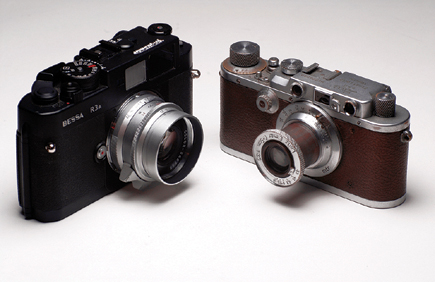 |
|
|
Battery Dependence
Are there no drawbacks to this brilliant new shutter/meter system? Well, inevitably there are a couple. First, the camera is now completely battery dependent: no battery, no shutter speeds. This matters more to some people than others but we would always carry our R2 or T as a backup, because with those, the battery powers only the meter and the shutter is fully mechanical.
It is all very well to say "always carry spare batteries" but they are very easy to forget if you switch your camera from one bag to another--and flat batteries "out of the box" are not unknown. The batteries are two LR44/SR44: the latter are recommended for longer life. After three months or so we had not even looked inside "our" camera to see which sort it had, so battery life isn't much of a problem!
|
At A Glance
|
|
 |
|
|
Light Touch, Please
The shutter release is a little too free, and this isn't just the camera we had for review. Every R3A user we know has shot at least one picture by accident while trying to take a reading, especially in bright sun when the numbers can be hard to see: you think the meter isn't on, press a little harder, and take a picture by accident. Your eye also needs to be well centered in order to see the numbers.
The life-size viewfinder of the R3A makes it wonderfully easy to do the old Leica-owners' trick of shooting with both eyes open: the viewfinder frame is superimposed on the whole world, hanging in space, in a way we have never encountered with any other range/viewfinder. It really is excellent.
